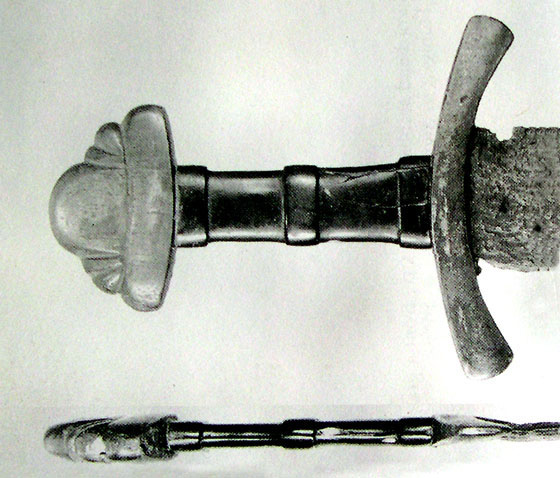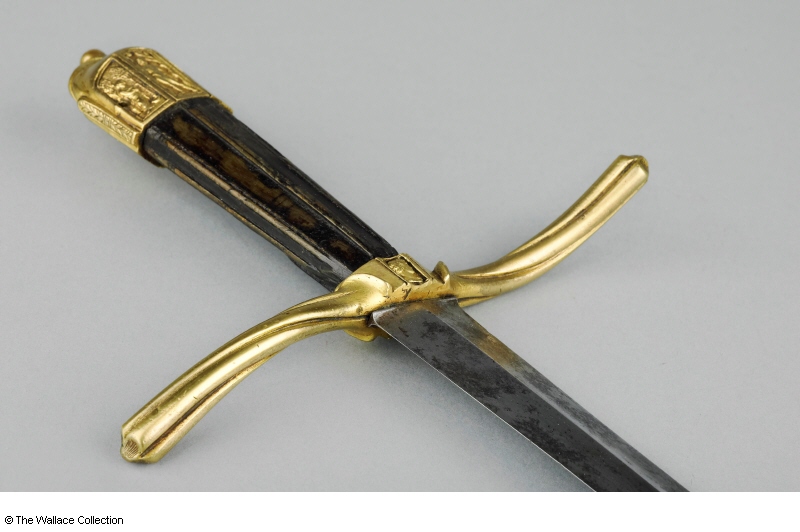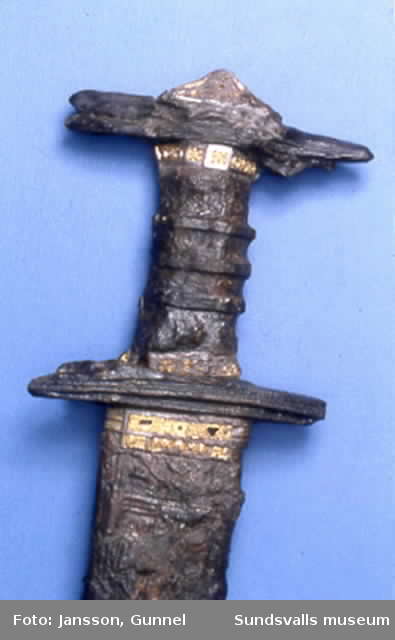How historically correct would it to use ram horn on a medieval sword 1200...1350?
A ram horn on a medieval sword? What do you mean?
| Quote: |
| A ram horn on a medieval sword? What do you mean? |
I suspect he means to use the horn material to make the grip or other fittings. Something like so:
[ Linked Image ]
The picture is a random Google search so don't read too much into it.
The issue with this is that I'm not sure the particular species of sheep that provide horn suitable for grips was available in the Middle Ages. If it was, I see no reason it couldn't be used. It might be more suitable for a knife grip than a sword, but that's my opinion, based upon the fact that *I* know of no extant examples using sheep's horn. There are a few that used cow's horn, though.
Wow, something I might actually be able to chime in about, limited though. Did you know that sheep are the second oldest domesticated animal (or goats were very close also, but more likely sheep) just behind dogs.
Merino sheep have been around for a long long time, but the theories behind breeding don't trace it back as far as some here might like. The Arabs were keeping breeding horse records far back into the pre-renaissance times, but I don't know off-hand if they would in Spain with sheep. Only that the horse breeding records are very old, and given the important resource of sheep I would not be surprised if there is something.
The Castillian kingdom especially developed the Merino during the middle ages and the best lines were property of the kingdom. The Rambouillet breed was developed in the 1700s from a gift of Merino sheep from the Spanish to the French kingdom.
These kinds of sheep were developed for very fine wool, and is the kind of wool in fine men's suits and the next-to-skin underwear and socks that are very popular today. Back in the middle ages they would have been using some stock derived from the Muslims, and you can see it come along with the spread of Islam. From Turkey and N. Africa into Spain, the breed did very well in dry climates and open country.
This wikipedia page has more info about Merino http://en.wikipedia.org/wiki/Merino and there is a nice picture of a ram with horns part of the way down.
The Brits and the Norse were developing very important breeds as well, but they were the longwool types, also with very nice horns. These breeds do better in the wetter climates of norther europe. Today among many others we have the Leicester Longwool and the Icelandic breeds. They were in Britain and Norse countries since the wool was very important to these countries economies. Think of that classic wool fisherman's sweater, or blankets. Maybe not something next to skin, but soft and very warm and lustrous. The horns of the Icelandic type of breeds would have worked fine for knife handles also I think.
Here's a wikipedia page on the Icelandic, derived from whatever Ur-stock of sheep those Vikings had. http://en.wikipedia.org/wiki/Icelandic_sheep
But I don't know anything of examples of knives or swords, because I am too new to sword and knife collecting to speak about that. The horn would make excellent grip as sides on a knife, or as a entire horn handle. I have seen and handled some North american contemporary items that use it. I hope someone posts pics of Middle Ages stuff.
Merino sheep have been around for a long long time, but the theories behind breeding don't trace it back as far as some here might like. The Arabs were keeping breeding horse records far back into the pre-renaissance times, but I don't know off-hand if they would in Spain with sheep. Only that the horse breeding records are very old, and given the important resource of sheep I would not be surprised if there is something.
The Castillian kingdom especially developed the Merino during the middle ages and the best lines were property of the kingdom. The Rambouillet breed was developed in the 1700s from a gift of Merino sheep from the Spanish to the French kingdom.
These kinds of sheep were developed for very fine wool, and is the kind of wool in fine men's suits and the next-to-skin underwear and socks that are very popular today. Back in the middle ages they would have been using some stock derived from the Muslims, and you can see it come along with the spread of Islam. From Turkey and N. Africa into Spain, the breed did very well in dry climates and open country.
This wikipedia page has more info about Merino http://en.wikipedia.org/wiki/Merino and there is a nice picture of a ram with horns part of the way down.
The Brits and the Norse were developing very important breeds as well, but they were the longwool types, also with very nice horns. These breeds do better in the wetter climates of norther europe. Today among many others we have the Leicester Longwool and the Icelandic breeds. They were in Britain and Norse countries since the wool was very important to these countries economies. Think of that classic wool fisherman's sweater, or blankets. Maybe not something next to skin, but soft and very warm and lustrous. The horns of the Icelandic type of breeds would have worked fine for knife handles also I think.
Here's a wikipedia page on the Icelandic, derived from whatever Ur-stock of sheep those Vikings had. http://en.wikipedia.org/wiki/Icelandic_sheep
But I don't know anything of examples of knives or swords, because I am too new to sword and knife collecting to speak about that. The horn would make excellent grip as sides on a knife, or as a entire horn handle. I have seen and handled some North american contemporary items that use it. I hope someone posts pics of Middle Ages stuff.
Last edited by J. Nicolaysen on Fri 23 May, 2014 5:02 am; edited 1 time in total
Yes I should have said that. ... For the grip. ...I have seen a site that sells ram, bull, impala and others ...I'm aware it's more for knives. ..But I'd like to see it used on a sword of mine, if historically correct for medeval time period
Horn was certainly widely used for grips and guards of swords during earlier periods. A couple of the swords found at Blacknall Field have the remains of horn hilts, though the species is not specified. Oakeshott also describes a 15th century sword with a type V pommel and a horn grip. I have used ram's horn and cow horn on a few sword hilts and think it is great stuff. I'll see if I can dig up some pictures of horn grips on swords from the specified time period for you. Good luck on your project.
That would be great Scott Thank you. ..
Here is a pic of a 10th or early 11th century sword from the river Schelt, which has a grip made of two plates of horn, the type XVIII with type V pommel mentioned by Oakeshott in "Archaeology of Weapons," a sword with grip of messer-like construction that may have horn plates and a Migration Era sword with well preserved horn hilt.
 Attachment: 99.02 KB
Attachment: 99.02 KB

 Attachment: 6.14 KB
Attachment: 6.14 KB

 Attachment: 120.12 KB
Attachment: 120.12 KB

 Attachment: 18.3 KB
Attachment: 18.3 KB





Page 1 of 1
You cannot post new topics in this forumYou cannot reply to topics in this forum
You cannot edit your posts in this forum
You cannot delete your posts in this forum
You cannot vote in polls in this forum
You cannot attach files in this forum
You can download files in this forum
All contents © Copyright 2003-2006 myArmoury.com — All rights reserved
Discussion forums powered by phpBB © The phpBB Group
Switch to the Full-featured Version of the forum
Discussion forums powered by phpBB © The phpBB Group
Switch to the Full-featured Version of the forum